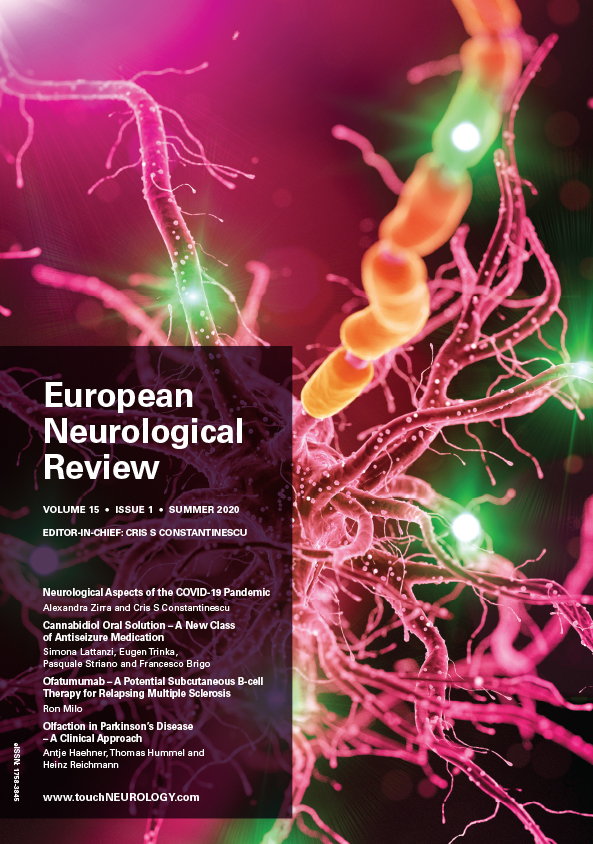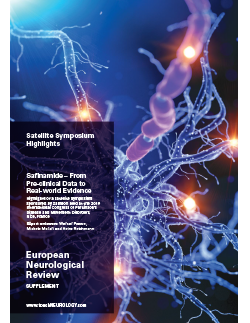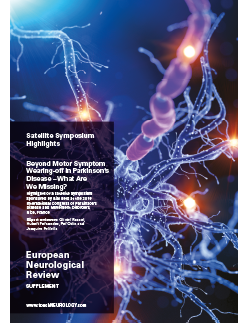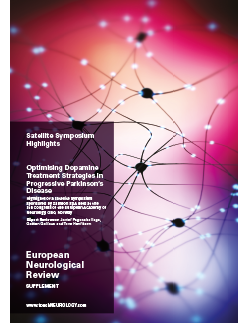
EUROPEAN NEUROLOGICAL REVIEW – VOLUME 3 ISSUE 1 – SUMMER 2008
Advisory Panel
In addition to the panel members below, Touch Briefings would like to thank Tamás Dóczi Past Vice President, European Association of Neurosurgical Societies (EANS) Bruno Vellas Principal Investigator, European Alzheimer’s Disease Consortium (EADC) Mary G Baker President, European Federation of Neurological Associations (EFNA)
Foreword
The focus of the European Neurological Society (ENS) 2008 meeting confirms the steady interest and progress in the treatment of chronic neurological disorders, which represent a major factor of disability. In the field of multiple sclerosis (MS), a number of new developments have been announced with the wider use of early treatment. The results of […]
Alzheimer’s Disease and Dementia
Medication management, including treatment compliance, is a widespread challenge in many therapeutic areas, particularly in chronic diseases such as hypertension, congestive heart failure, diabetes and psychiatric illnesses.1 Older adults particularly, who typically take multiple medications for concurrent conditions,2 tend to have difficulties with treatment compliance due to complex and complicated drug regimens, the extent to […]
Recent epidemiological evidence suggests a worldwide prevalence of 24.3 million cases of dementia, with one new case developing every seven seconds.1 Alzheimer’s disease (AD) remains the most common cause of dementia, responsible for 60–70% of cases in Europe.2 In addition, around 30% of patients with Parkinson’s disease (PD) are affected by dementia.3 In a 12-year […]
Currently, cholinesterase inhibitors are the mainstay in clinical practice of symptomatic treatment for Alzheimer’s disease (AD). They are believed to act by inhibiting one or both of the enzymes that degrade acetylcholine in the synaptic cleft, i.e. acetylcholinesterase (AChE) and butyrylcholinesterase (BuChE), thereby putatively improving neuronal transmission.1 An association of AChE and BuChE with the […]
Although there have been tremendous developments in the understanding of the molecular biology of Alzheimer’s disease (AD), this has not yet been translated into substantially improved therapies. There are still only two classes of licensed symptomatic treatments; however, the management of neuropsychiatric symptoms remains a huge clinical problem, and despite increasing efforts to identify novel […]
Parkinson’s Disease
It is thought that motor fluctuations in Parkinson’s disease (PD) to a large extent result from pulsatile dopaminergic stimulation due to the short half-life and erratic absorption of oral levodopa therapy. Providing more continuous dopaminergic stimulation (CDS) has therefore become a central dogma in the prevention or treatment of hypo- and hyperkinetic fluctuations in PD. […]
Disappointed by the limitations of pharmacotherapy, emboldened by technological advances in surgery and radiology, and armed with a better understanding of pathophysiology, physicians and scientists in the 1980s charted a renaissance of surgery for movement disorders such as Parkinson’s disease (PD). The desire for a safer alternative to lesional or ablative neurosurgery, coupled with observations […]
Parkinson’s disease (PD) is a disorder of unknown cause affecting 1% of people over 60 years of age, making it the second most common neurodegenerative disorder after Alzheimer’s disease in this population. The motor symptoms associated with PD are thought to arise from dopamine deficiency, although the pathophysiology of various Parkinsonian symptoms is not yet […]
Stroke
Cerebral vasospasm following subarachnoid haemorrhage (SAH) is the leading potentially treatable cause of morbidity and mortality in patients who experience the rupture of an intracranial aneurysm.1,2 A significant predictor of outcome in patients with aneurysmal SAH, cerebral vasospasm is radiographically present in up to 70% of patients and is clinically evident in 20–30%.1,3 Annually, between […]
Pharmaceutical Recanalization Therapies
For decades, the overwhelming emphasis on the development of therapeutic interventions for the treatment of stroke has been in the area of neuroprotection, acute intervention to reduce the volume of cerebral infarction, and the sequellae of secondary cell death, whether by necrosis or apoptosis.1,2 Concerted efforts to elucidate mechanisms of cell death were translated into […]
The current literature available on databases in medicine and related areas clearly shows a remarkable growth of knowledge in neuro-degenerative and cerebrovascular diseases. However, it shows an equally remarkable gap between the ‘neurodegenerative field’ and the ‘vascular field’. Research on dementia/cognitive impairment is heavily ‘alzheimerised’, giving vascular pathologies secondary status. Research on stroke/cerebrovascular disorders has […]
Intraoperative Monitoring
Knowing the functional integrity of the spinal cord during surgery is an intriguing concept that was first probed by orthopaedic surgeons three decades ago. Sensory-evoked potentials (SEPs) were available then, but with, from today’s perspective, a rather primitive technology. Furthermore, SEPs reflect the functional integrity of the sensory pathways. Information about the more important motor […]
Imaging
Multiple sclerosis (MS) is an autoimmune inflammatory disease of the nervous system due to a still unknown antigen.1 While the diagnosis of MS relies primarily on a combination of typical clinical symptoms and paraclinical findings (cerebrospinal fluid [CSF] findings from lumbar puncture), neuroimaging plays an important role in its management.2 While plaques can sometimes be […]
Ultrasound now provides the first medical imaging technique to allow realtime visualisation of stroke. Going beyond new diagnostic applications, this non-invasive modality also offers novel therapeutic opportunities. Emergent treatment of acute ischaemic stroke includes the possibility of using ultrasound to enhance recombinant tissue plasminogen activator (rt-PA) thrombolysis.1,2 Moreover, intravenous microbubbles combined with transcranial ultrasound can […]
Fluorescence angiography was first used by ophthalmologists to measure retinal blood flow by using the fluorescent dye fluorescein. Feindel et al.1,2 were the first to apply the concept of fluorescence angiography to the intraoperative visualisation of cerebral vertebral arteries and cerebral microcirculation in patients undergoing neurosurgical procedures.3,4 With the use of indocyanine green (ICG) as […]
Surgery for gliomas aims to remove as much of the tumour mass as possible while at the same time preserving the patient’s functional integrity. This policy particularly applies to resection of gliomas located close to or within the so-called ‘eloquent’ areas, i.e. areas that are involved in motor, language or visuospatial functions. In these cases, […]
The gloomy prognosis of high-grade gliomas is well known, especially for glioblastoma multiforme (GBM). Until recently, surgery followed by irradiation was the standard treatment, with a median survival of around 11 months. Since the results of the European Organization for Research and Treatment of Cancer (EORTC) trial with adjuvant and concomitant temozolomide, which showed that […]
Brain tumours represent a major focus of research in chemotherapy, radiotherapy and neurosurgery. The principle that guides all of these disciplines is: be effective on the tumour with fewer effects on normal brain tissue. In surgical sciences this concept has become known as ‘minimally invasive surgery’. The development of endoscopic techniques has had a revolutionary […]
Radiosurgery
Annually, about 4,300 patients per million people present with cancer. According to conservative estimates about 8.5% of cancer patients will develop brain metastases,1 yet there is no general management strategy dealing with this situation. Treatment options include fractionated whole-brain radiotherapy (WBRT), microsurgical resections,2 radiosurgery with either Linac® or Gamma Knife® or, in some instances, supportive […]
Sleep
Narcolepsy with cataplexy is a chronic sleep disorder primarily characterised by excessive daily sleepiness (EDS) and cataplexy.1 Two forms of narcolepsy have been identified: the majority of patients (60–70% according to studies2) suffer from narcolepsy with cataplexy, whereas the others do not appear to present symptoms of cataplexy.3 To date, it is still considered unusual […]
It is more than 125 years since the classic description of narcolepsy was presented by Gélineau. Since then much has been learned about the background, diagnosis, and management of narcolepsy, especially over the last few decades. It is likely that hypocretin-producing cells in the lateral hypothalamus are selectively destroyed in genetically susceptible individuals carrying one […]
Epilepsy
Following the first encouraging human trials in 1988,1,2 several controlled studies have demonstrated the antiepileptic efficacy of adjunctive vagus nerve stimulation (VNS) in patients suffering from refractory seizures.3–7 Accordingly, VNS was approved in Europe in 1994 as an antiepileptic treatment for patients with generalised or focal drug-resistant epilepsy. In 1997, the US Food and Drug […]
Epilepsy is a common neurological disorder, affecting 1–2% of the population worldwide, and is characterised by recurrent spontaneous seizures. Seizures are brief behavioural changes caused by the abnormally synchronous and rhythmic firing of neuronal assemblies in the brain, which may either involve specific systems of the brain or start in a restricted area and spread […]
Multiple Sclerosis
Multiple sclerosis (MS) is an inflammatory disease of the brain and spinal cord characterised by focal areas of demyelination and neuronal destruction. Historically, disease-modifying therapies used to treat MS have been administered by injection, exerting their effects through generalised immunomodulatory and anti-inflammatory mechanisms.1 These injection therapies are only moderately effective in reducing relapses and disability […]
Glucocorticosteroid Therapy of Acute Multiple Sclerosis Relapses
Four clinical dimensions can be impaired in multiple sclerosis (MS): neurological function, cognition, emotions, and fatigue. Neurological impairment, cognitive deficits, and fatigue are recognized to be part of the functional handicap and deterioration of quality of life in MS patients, while the effect of emotional impairment, which includes behavioral changes and decision-making difficulties, has been […]
Restless Legs Syndrome
Attention-deficit–hyperactivity disorder (ADHD) is one of the most common childhood psychiatric disorders, estimated to affect 5–10% of school-aged children worldwide.1 According to the Diagnostic and Statistical Manual of Mental Disorders – Fourth Edition – Text Revision (DSM-IV-TR),2 ADHD is defined by a persistent and age-inappropriate pattern of inattention, hyperactivity–impulsivity or both. Onset before the age […]
Headache
Cluster headache (CH) is one of the trigeminal autonomic cephalalgias (TACs), which are primary headache disorders characterised by unilateral head pain occurring in association with prominent ipsilateral cranial autonomic features, such as lacrimation, conjunctival injection or nasal symptoms.1,2 TACs include paroxysmal hemicrania (PH) and short-lasting unilateral neuralgiform headache attacks with conjunctival injection and tearing (SUNCT) […]
Tension-type headache (TTH) is the most prevalent headache type and the one with the highest socioeconomic costs.1 It is a complex disorder in which a range of heterogeneous mechanisms are likely to play a role.2 The treatment of an acute episode in patients with infrequent TTH is often straightforward. However, in patients with frequent headaches, […]
There has been a great deal of research describing the co-morbidity of migraine/tension headache with anxiety and depression.1–3 Previous studies have documented the increased association with migraine and the bipolar spectrum.4,5 Those with the bipolar spectrum have also been shown to be more likely to suffer from migraine.6,7 For cluster headache and chronic tension headache […]
Neuropathic Pain
Neuropathic pain (NP) syndromes are chronic pain disorders that develop after a lesion of the peripheral or central nervous structures that are normally involved in signalling pain. It is estimated that about 35% of chronic pain patients suffer from NP, and that up to 5% of the population is affected. The characteristics of NP differ […]
Diary
2008 26–31 July 11th International Conference on Alzheimer’s Disease Chicago, IL, US www.alz.org/icad 17–22 August 12th World Congress on Pain Glasgow, Scotland www.iasp-pain.org 23–26 August 12th Congress of the European Federation of Neurological Societies Madrid, Spain www.kenes.com/efns 12–14 September 8th European Association of Neuro-oncology Congress Barcelona, Spain www.medacad.org/eano2008
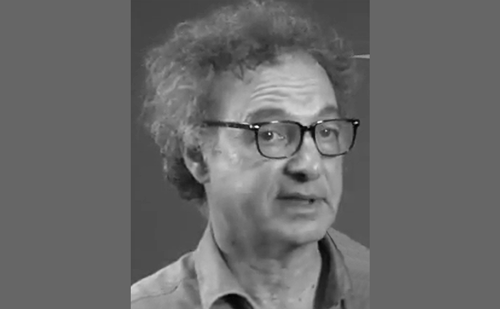
Trending Topic
Welcome to the latest edition of European Neurological Review, which features a wide range of articles of interest to neurologists and other practitioners involved in the care of patients with neurological illness. As we move into a new decade, the field of neurology continues to face fresh challenges. Despite an increased understanding of the pathophysiological […]
Journal Archive
European Neurological Review is a peer-reviewed, free-to-access, bi-annual neurology journal comprising review articles, case reports, practice guides, theoretical discussions, and original research. It features balanced and comprehensive articles written by leading authorities, addressing the most important and salient developments in the field of neurology in practical terms.
Latest articles videos and clinical updates - straight to your inbox
Log into your Touch Account
Earn and track your CME credits on the go, save articles for later, and follow the latest congress coverage.
Register now for FREE Access
Register for free to hear about the latest expert-led education, peer-reviewed articles, conference highlights, and innovative CME activities.
Sign up with an Email
Or use a Social Account.
This Functionality is for
Members Only
Explore the latest in medical education and stay current in your field. Create a free account to track your learning.


